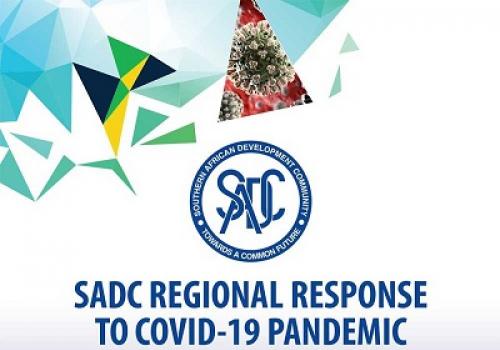This Bulletin No. 5 of the SADC Regional Response to COVID-19 (BULLETIN 5-SADC Regional Response to COVID-19) provides an overview of the global, continental and regional overview of the pandemic. Several SADC Member States have embarked on processes towards lifting of public health and other measures in view of depressed economies, which is the crux of this report, where we provide an analysis of the costs and benefits of lifting measures and further highlight the importance of undertaking a risk assessment of each country, including at sub-national level, prior to the lifting of lock down and other measures. Experts have indicated that premature lifting of lockdown measures may lead to a second wave of the pandemic, such as what has been witnessed in Germany and South Korea among others, therefore WHO guidelines remain paramount.
According to Michelle Bachelet the UN Commissioner for Human Rights, “If the re-opening of societies is mishandled, all the huge sacrifices made during the initial lock down will have been for nothing. However, the damage to individuals and to the economies, will not just be retained –it will be significantly amplified”
The Bulletin also provides some highlights of testing in the SADC region, further making emphasis on the importance of testing which remains quite low in most countries in the SADC region. It tracks the socio-economic issues emanating from COVID-19. Reference has also been made on the importance of ICT, as driver for economic growth as well as a facilitator for business continuity in these challenging times.
Key recommendations in the Bulletin are summarised below;
(i) Adjusting of public health and social measures
The adjusting of measures should not be undertaken all at once, but should be considered at the subnational level, starting in areas with lowest incidence. Basic individual measures (e.g. isolation and care of suspect and confirmed cases, quarantine of contacts, hand hygiene and respiratory etiquette) should be maintained.Where feasible, measures should be lifted in a controlled, slow, and step-wise manner, for example, using two-week intervals to identify any adverse effects.
In the absence of scientific evidence on the efficacy of each single measure, as a general principle, measures with the highest level of acceptability and feasibility and the fewest negative consequences could be introduced first and removed last.
Protection of vulnerable populations should be central in the decision to maintain or lift a measure.
Some measures (e.g. business closures) could be lifted first where the population or individual density is lower and could be lifted for part of the workforce before allowing 100% of the workforce to return to a business
(ii) Testing for COVID-19
Member States are encouraged to increase their testing capacity to be able to isolate, trace contacts and treat patients to reduce the spread of COVID-19, focusing on those presenting with symptoms and the vulnerable among others
(iii) Social and Economic Sector
Member States are urged to revise priorities reflected in budget revenue, spending and financing to meet COVID-19 emergency demands and to contain fiscal deficits and surges in public debt, at manageable levels.
(iv) Enhancing Connectivity in SADC
Member States are urged to invest in enhancing ICT capabilities to ensure business continuity, which will also have a positive ripple effect on economic growth
| Attachment | Size |
|---|---|
| SADC_Regional_Response_to_COVID-19_Bulletin_5.pdf | 3.48 MB |

